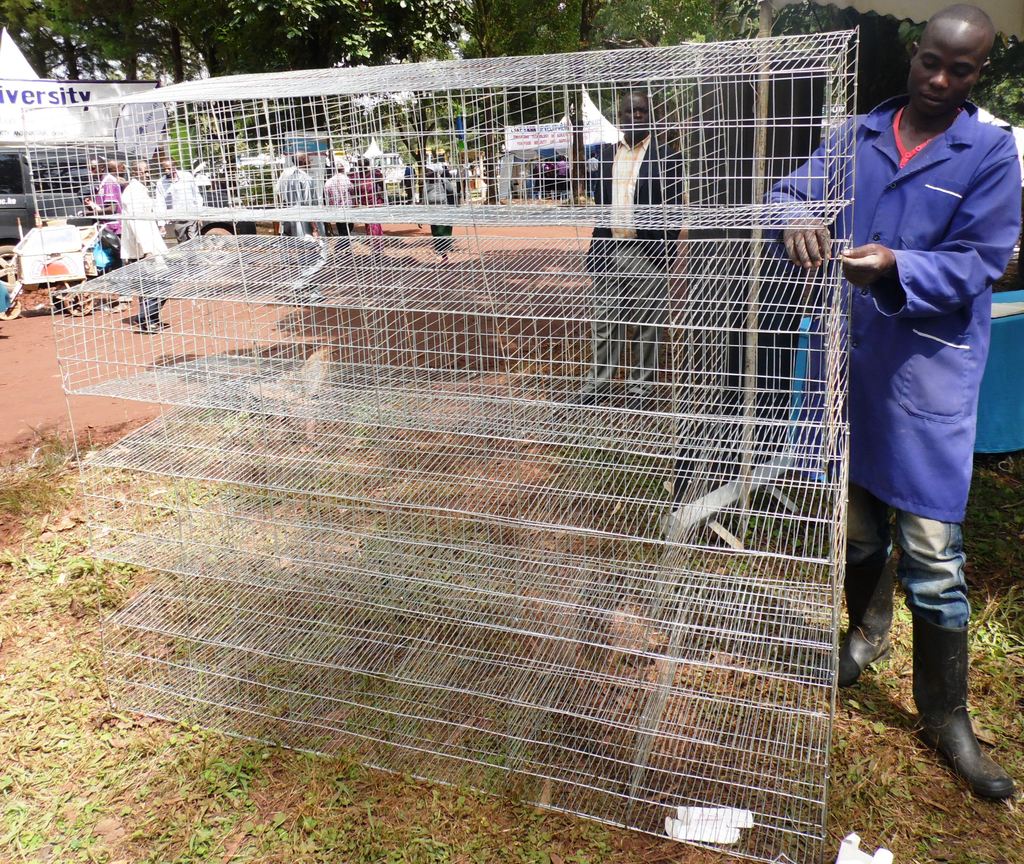Rabbit farmers can now produce a higher quality of meat and fur with a new high hygiene all-steel wire cage which does not harbor parasites like its timber structure.
Gervase Wakoli of Enkokho Kuku Farmers-manufacturers of the cage-said the cage allows for close monitoring of external parasites, which can significantly reduce the quality of meat, fur and skin products.
Heavy infestation of the parasites can cause anaemia, as well as poor quality skin in the rabbits because they keep on biting the animal.
“Mites, ticks, lice and fleas like dark areas where they hide. Timber crevices are best hiding places that even after fumigation, it is hard to control the parasites,” said Wakoli.

Signs of parasite infestation
Rabbits infested by parasites are always restless; they spend most of the time scratching and rubbing themselves against the walls.
They will remarkably lose weight due to loss in appetite. This is because they concentrate more on relieving themselves of the itchiness.
Rural farmers who rear dogs also use them to protect their rabbits by tying them under the cages to scare away predators such as wild cats and other dogs.
However, according to Nyamira County-based animal health officer, Patrick Nyauma, the dogs are a potential source of the parasites, especially the fleas.
It is, therefore, not advisable to have them near the cages if they are not regularly sprayed to keep off the parasites.
No faecal and urine accumulation in cage
Wakoli’s cage, which costs Sh18,000, has 24 compartments where every one of the rabbits is enclosed, except during mating.
“Each of the housings has an under-space where feacal droppings and urine are collected on a cardboard and drainer. There is no time that the rabbits will step on their droppings. Feacal matter will not accumulate within the cubicle; waste provides shelter to these enemies,” he said.
The excrement collected can be used as manure or be sold to rake in more revenue for the farmer.
“The cages also allow for free air circulation into the one-and-half-square-feet area per single compartment,” Wakoli said.
Because there is no roof, the movable cage must be kept under shade to prevent rain and strong cold wind.
How to detect the parasites
According to Willows, an online agribusiness resource centre, mites will appear as scurfy skin on the back or between the shoulder blades while others will accumulate on the ear surface and canal.
Lice can be seen upon close scrutiny of the base of the fur.
Although fleas are slightly harder to detect, a close look onto the surface of the skin will show small black specks, which are droppings from the parasites.
Wakoli can be reached on +254727474045
Write comment (0 Comments)



 Unconcentrated rabbit urine poured in a backpack sprayer. Photo courtesy.
Unconcentrated rabbit urine poured in a backpack sprayer. Photo courtesy.











